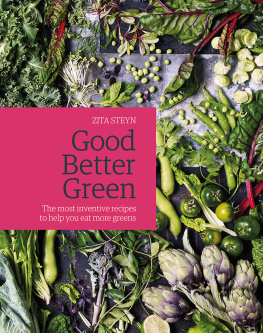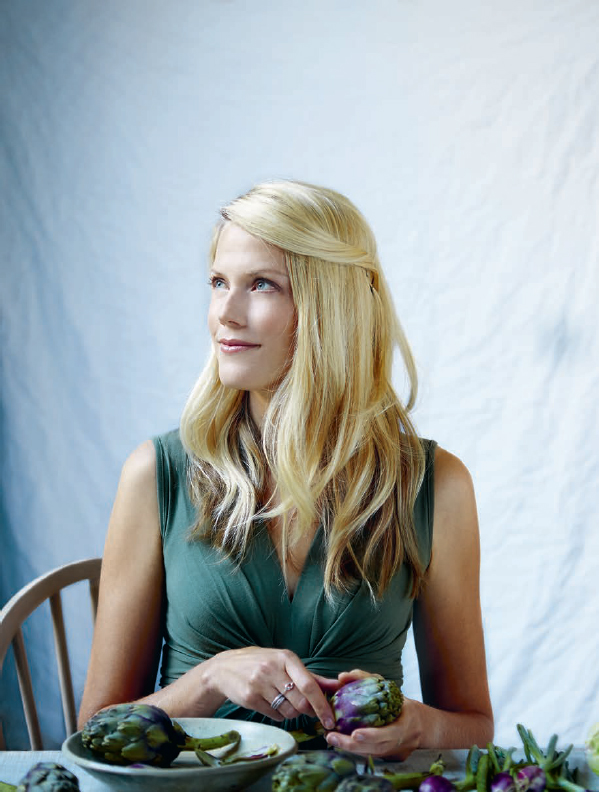For my mum, whose dedication to the wellbeing of her loved ones has never wavered. Ever.
Recipe notes
When budget, availability and time allow, I recommend the following:
organic meat, dairy products, gelatine and eggs from humanely treated animals that have been pastured and allowed to roam free
good-quality stock, preferably homemade
sustainable seafood from unpolluted waters
raw (or unpasteurised) cider vinegar, dairy products, coconut oil and water, and honey
extra virgin olive oil and other good-quality cold-pressed oils
organic or minimally sprayed fresh local and seasonal produce, preferably biodynamically grown
organic unwaxed citrus fruits, especially if zesting
organic and preservative-free ingredients, such as condiments, sausages, wine, coconut milk and dried fruit (sweetened with fruit juice, if at all)
filtered water, especially when used for fermenting or preserving
soaking (and even sprouting) grains, nuts, seeds and legumes before cooking and/or consuming

Contents
My approach to food has been largely shaped by my upbringing in an active, unfussy and lively household. My mother had always taken her responsibility of feeding us, her four boisterous children, extremely seriously, and although I was slightly embarrassed at the time, I still recall the feeling of awe every time I opened a lunch box she had prepared. When I was at primary school, my mum fell ill with chronic fatigue syndrome for several years, and only managed to claw her way out of the black hole by implementing a complete overhaul of her and our! lifestyle. It meant studying nutrition and holistic medicine in great depth, drastically reducing sugar and refined foods even more, and preparing meals that withstood the rigorous test of being whole, wholesome and health-supportive. But amazingly the food still tasted fantastic!
This book was born out of the one question that almost all my clients and friends have asked me at some point: How do I incorporate more green vegetables into my diet? That was all the inspiration I needed to create this collection of honest, delicious and interesting dishes based on a real need by real people.
Green vegetables, in particular the dark-green leafy kind, are the most nutrient-dense foods available to us. They contain an array of potent compounds that are very difficult to find anywhere else in the same concentration. Green vegetables are rich in dietary fibre, folic acid, beta-carotene, vitamin C, vitamin K, potassium and magnesium, as well as containing a host of phytochemicals that can reduce inflammation and eliminate carcinogens. They contain a variety of carotenoids, flavonoids and other powerful antioxidants that prohibit the oxidation of molecules in the body and are thought to prevent several degenerative diseases. Some green vegetables are also a major source of iron and calcium. In addition to these, sea vegetables (many of them a dark green-black), contain all of the 56 elements essential for human health in bio-available form, together with important trace elements like selenium that are often lacking in land vegetables due to soil demineralisation.
Over 2,000 years ago, Hippocrates said that all illness begins in the gut. And today many experts still believe there is a lot of truth in that. How can we expect to power our hardworking engines if we dont prioritise the fuel we put into them? Some of the recipes in this book may use a few more ingredients and seem a little more time-consuming than you are used to, but they are certainly not difficult to make and they are well worth the effort. Anyone can put something on a plate and call it supper, but only those who know how to combine flavours and use all the varied aromatics nature has to offer, will serve up a meal that is not only medicine for the body, but also food for the soul.
Zita
It is wonderful to see how the tide is turning and that ever more people are becoming aware of the crucial role that good, nutritious food plays in a healthy life. Most of us now know that eating lots of vegetables, especially green ones, is vital. One question I often get asked, however, is how to incorporate these green vegetables on a daily basis. And so the idea for this book was born. In it you will find suggestions on how to use many different kinds of green vegetables, with a particular focus on leafy greens. Feel free to substitute and experiment once you are familiar with these wonderful foods, you will no doubt find many more ways to enjoy them!
A word of advice: try not to get stuck on a few trusty friends. It is important to rotate between all the different vegetables, because each belongs to a different family that boasts a unique nutritional profile. Dark-green leafy vegetables are high in calcium and iron, and the bioavailability of the calcium is actually higher in kale and other dark-green leafy vegetables (like broccoli) than in dairy, but you need to eat a large variety of calcium-containing plant foods to ensure you are getting enough. Many vegetables also contain small amounts of toxins as a defence mechanism to protect the plant against predators. If consumed in excess these toxins could have a negative impact on your health, for example, the goitrogens in cruciferous vegetables could interfere with thyroid hormone function in susceptible individuals, and the oxalic acid in amongst others spinach, chard and beet(root) greens may inhibit mineral absorption and lead to kidney stone formation in those prone. Rotating between them will therefore ensure you gain the maximum advantage of all the wonderful nutrients they have to offer, without building up harmful levels of any toxin.
Aquatic greens
These are greens that live and grow in or near water. If they are not yet a regular part of your diet, consider finding ways to include them often. Remember to source aquatic greens from clean waters.
SEAWEEDS
Green sea vegetables are extremely nutritious, as they offer one of the broadest ranges of minerals of any food, containing almost all the minerals found in the ocean, including iodine, copper, iron, zinc, potassium, phosphorus and manganese. They contain a variety of unique phytonutrients, including the potent fucoidans, that appear to have anti-tumour, anti-cancer and neuro-protective actions. Unlike some other categories of vegetables, sea vegetables do not appear to depend on carotenoids and flavonoids for their antioxidant benefits because they contain several other types, including alkaloid antioxidants. Sea vegetables are also an excellent source of vitamins A, C, thiamin, riboflavin, niacin and B6.
WATERCRESS
Spidery watercress well known to many as a garnish and almost always pushed to one side by diners is not only one of the most nutrient-dense foods available to us, but its peppery leaves are also very exciting to eat and cook with. Although this plant is technically a member of the brassica family (see ) and botanically related to garden cress, rocket and mustard, I have included it in this group, as it is considered an aquatic or semi-aquatic perennial plant that is often found near slow-moving water. Amongst the oldest-known leafy greens consumed by humans, watercress contains significant amounts of iron, calcium, iodine and folic acid, as well as vitamins A and C. It is great in salads and soups, tossed with pasta, on sandwiches, and paired with citrus or seafood, especially smoked fish. The best way to buy and store watercress is in lush bunches and in a small jug of water.
















